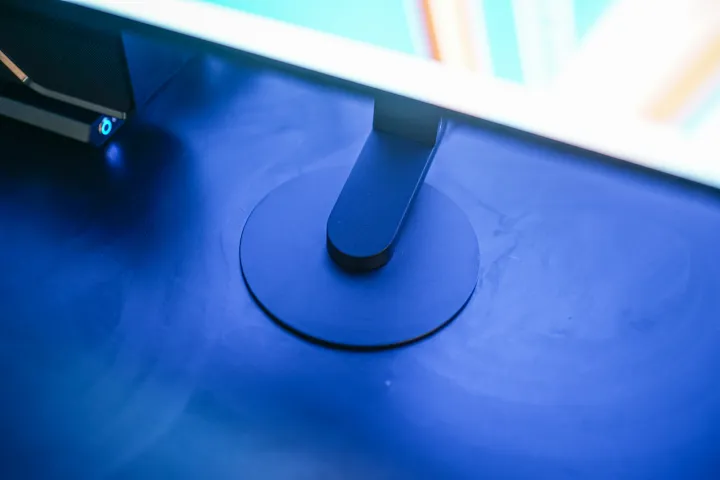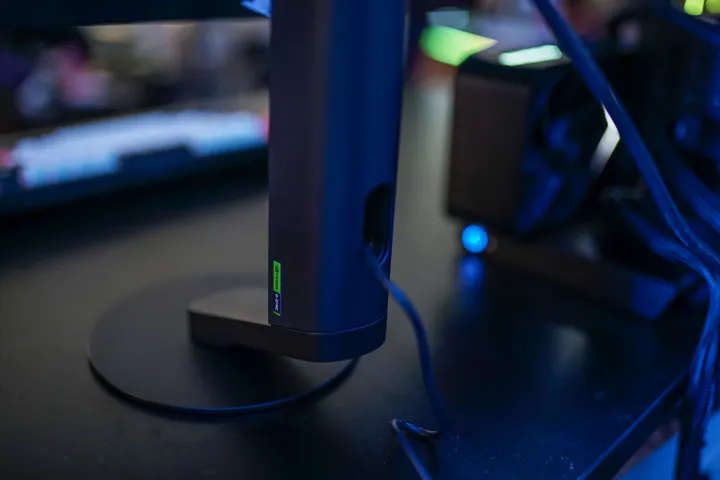“I wish I could recommend the InZone M10S, but it really needs a better warranty.”
Pros
- Searing brightness
- Thoughtfully designed stand
- Unmatched motion clarity
- InZone Hub for managing your monitor
- Great color coverage
Cons
- Only a one-year warranty
- Expensive
- Color accuracy isn’t great out of the box
Sony’s InZone brand is back. InZone burst onto the scene two years ago, with the InZone M9 quickly shooting to the top of the best gaming monitors list. After losing some ground to other mini-LED and OLED options, Sony is back with its first OLED gaming monitor ever: the InZone M10S. And it’s quite the sight to behold.

Get your weekly teardown of the tech behind PC gaming
With a 480Hz refresh rate, a thoughtful design, and the highest brightness I’ve ever recorded for an OLED display, it’s easy to say the M10S is an impressive monitor. Despite that, I’m struggling to recommend it. Sony is coming in more expensive than the competition, all while delivering less warranty coverage, which makes the M10S a tough sell regardless of how impressive it is.
Sony InZone M10S specs
| Screen size | 26.5 inches |
| Panel type | OLED (LG Display WOLED) |
| Resolution | 2,560 x 1,440 |
| Peak brightness | 1,300 nits (HDR), 275 nits (SDR) |
| HDR | DisplayHDR True Black 400 |
| Local dimming | 3,686,400 dimming zones |
| Contrast ratio | 1,500,000:1 |
| Response time | 0.03ms (GtG) |
| Refresh rate | 480Hz |
| Curve | N/A |
| Speakers | N/A |
| Inputs | 2x HDMI 2.1, 1x DisplayPort 2.1 |
| Ports | 2x USB-A |
| List price | $1,100 |
Back-to-basics design

It only took one generation for Sony to give up on the unique — and heavily criticized– design of the InZone M9. The M10S is definitely less bombastic in its design, and you could mistake it for any other monitor at first glance. The more you look at the display, however, the more clear it becomes how much is different compared to a monitor like the Cooler Master Tempest GP27Q.
The stand is extremely small. Sony says it was designed alongside esports team Fnatic, and although I don’t normally put much stock in “esports designed” peripherals, the competitive influence shows through here. The base of the stand is small, but Sony also offsets the arm of the stand. The combination of these two changes allows you to get very close to the display with your keyboard and mouse, as well as position them in a way that’s comfortable.

For design changes that are more practical to everyone, Sony now includes a cable routing channel through the stand so you can keep your cable clutter to a minimum. It works well for the power adapter, though I wasn’t able to fit a DisplayPort cable with a ferrite bead — the little plastic bump on the end of some cables — through the routing channel. I understand keeping the stand small for competitive gamers, but a small bump in size would ensure you could fit these types of cables through the routing channel.
One of the biggest upgrades compared to the old InZone M9 comes in the adjustments. You can actually position the monitor properly on the stand now with 180 degrees of swivel in either direction, 30 degrees of tilt, and 4.7 inches of height adjustment — that’s more than most monitors offer. Like the previous design, you can also just ditch the stand and use the the 100mm x 100mm VESA mount to attach the M10S to a monitor arm.
Competitive features
The M10S is focused on competitive gaming, and it has a feature set to match. While monitors like the Asus ROG Swift PG32UCDM focus more on console experiences with features like Black Frame Insertion (BFI), Sony’s list of features caters to esports players on PC. I’m not much of a competitive player, and I normally write off features specifically catered to esports players, but Sony’s offerings here are actually useful.


